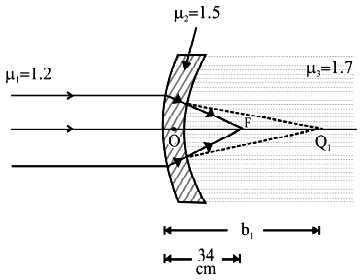(1) 10 cm
Let c be the magnitude of the radius of each surface of lens. Had there been only one surface; the incident parallel beam, after refraction would have met the principal axis at Q1 , at a distance b1 from this surface.

Form refraction at first surface of lens we have

For refraction at second surface, Q1 acts as a virtual object, forming the real image at F. Therefore,
u2 = +b1 ; v2 = +34 cm; R2 = +c
From refraction formula; we now get
